Take a look at the following progression of images:



What's happening here is first I selected "Baseball", causing the 3 gray views you see to rotate left so that the one with the various levels is in the middle (second image). You can see that already at this point the view's width has been substantially reduced. The third image occurs after clicking on the view containing the sports names, causing it to rotate back to the middle.
From what I can tell, the width of a view is reduced when it rotates into the middle. But I have no idea why.
Here's the relevant code. pos refers to where the view in question is going to be located. 0 indicates that it's in the middle, 1 indicates that it is one to the right of the middle, -1 is one to the left of the middle, etc.
- (void)perspectiveView:(MenuSection *)view forPosition:(NSInteger)pos
{
CALayer *layer = view.layer;
CATransform3D transform = CATransform3DIdentity;
MenuSection *prevView = (pos >= 0) ? (MenuSection *)[self viewWithTag:view.tag - 1] : (MenuSection *)[self viewWithTag:view.tag + 1];
if (pos == 0) {
view.changingToFrame = CGRectMake(round((480 - view.frame.size.width)/2), view.frame.origin.y, view.frame.size.width, view.frame.size.height);
view.frame = view.changingToFrame;
} else {
if (pos == 1) {
NSLog(@"%@",NSStringFromCGRect(prevView.changingToFrame));
view.changingToFrame = CGRectMake(round(prevView.changingToFrame.origin.x + prevView.frame.size.width + 20), view.frame.origin.y, view.frame.size.width, view.frame.size.height);
transform.m34 = 1.0 / 1000;
} else if (pos == -1){
view.changingToFrame = CGRectMake(round(prevView.changingToFrame.origin.x - view.frame.size.width - 20), view.frame.origin.y, view.frame.size.width, view.frame.size.height);
transform.m34 = 1.0 / -1000;
} else if (pos == 2){
view.changingToFrame = CGRectMake(round(prevView.changingToFrame.origin.x + prevView.frame.size.width + 20), view.frame.origin.y, view.frame.size.width, view.frame.size.height);
transform.m34 = 1.0 / 500;
} else if (pos == -2){
view.changingToFrame = CGRectMake(round(prevView.changingToFrame.origin.x - view.frame.size.width - 20), view.frame.origin.y, view.frame.size.width, view.frame.size.height);
transform.m34 = 1.0 / -500;
}
view.frame = view.changingToFrame;
transform = CATransform3DRotate(transform, 45.0f * M_PI / 180.0f, 0.0f, 1.0f, 0.0f);
}
layer.transform = transform;
}